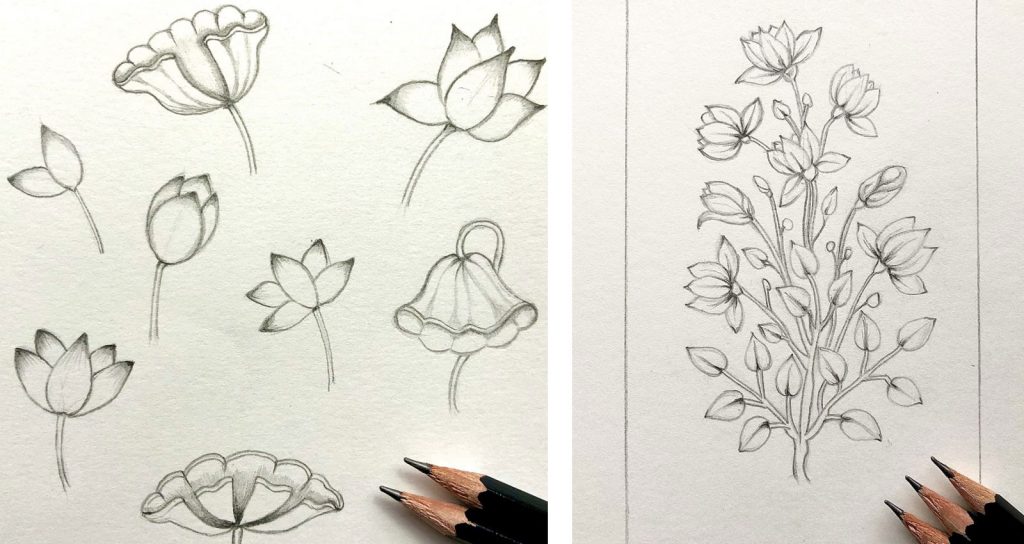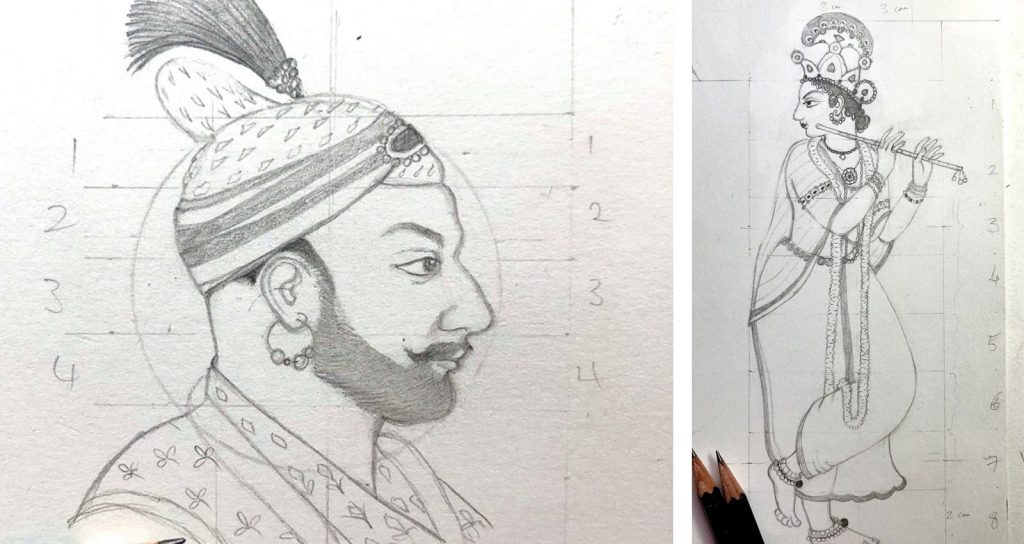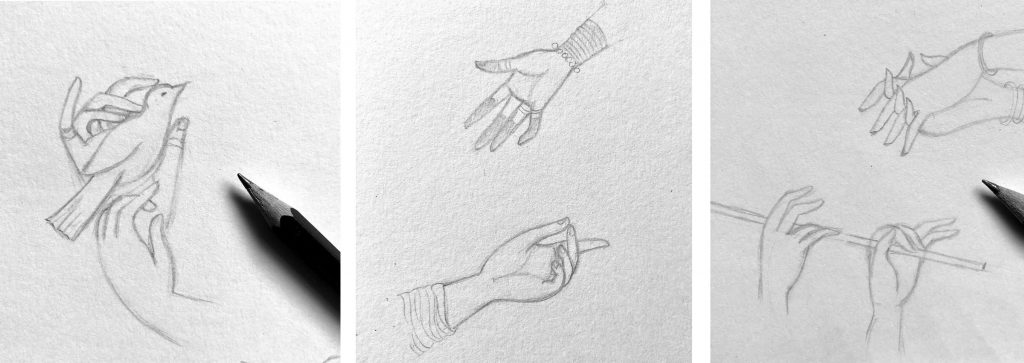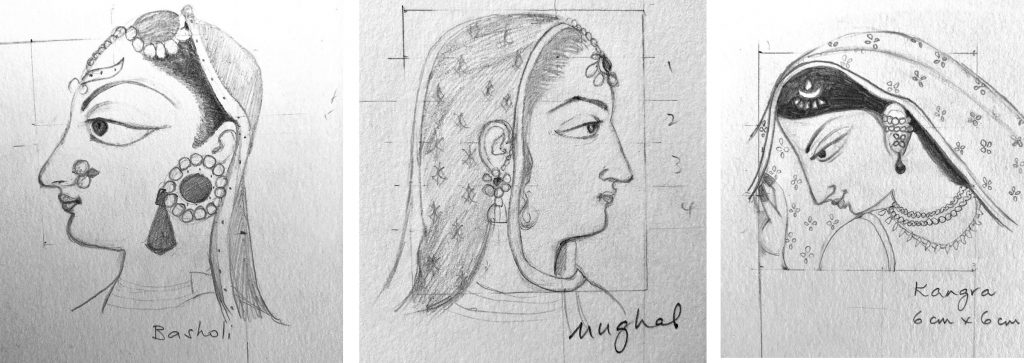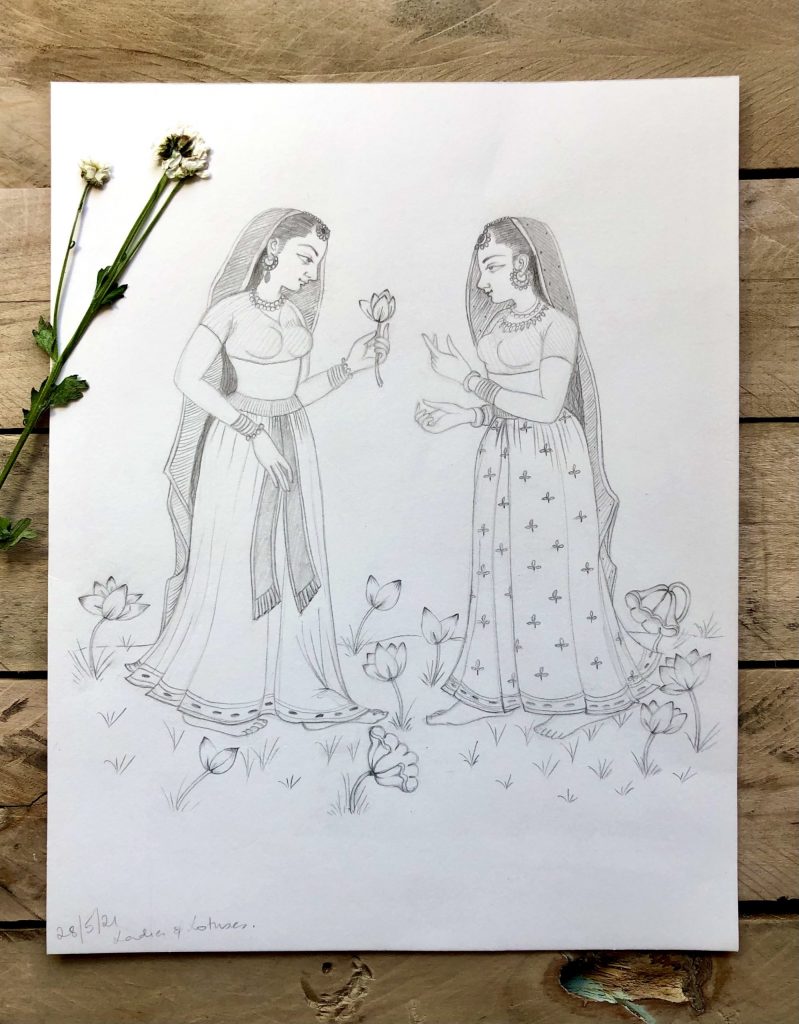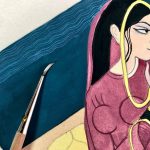The Beauty of Indian Miniature Art Drawing
Indian miniature art is undeniably beautiful!
I recently studied a course on this traditional art lead by the inspirational tutor Dr Susana Marin of The Prince’s School of Traditional Arts, London. The course focused on drawing. As an illustrator and calligrapher, detailed drawing is my passion & exploring all the skills of Indian miniature drawing has been very enlightening. And hard work! Rather like learning a new calligraphy script or a foreign language.
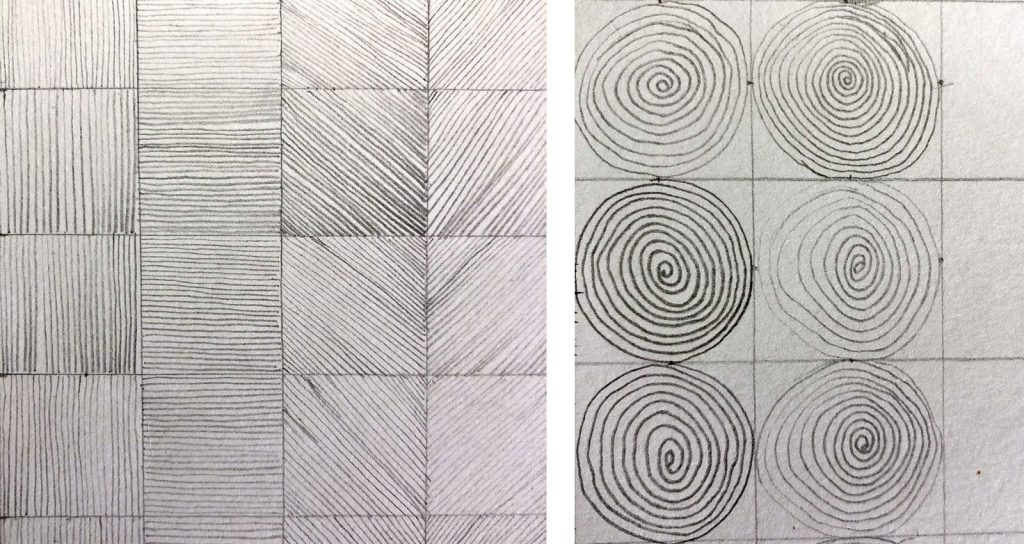
Warming up with hand control exercises
Patience is a must when learning. I know that very well from my own calligraphy experience. It’s a challenge keeping lines equidistant & within a small grid, while not taking your hand off the paper! Getting used to guiding fine hard pencils (2h – 5h) on a page for this exercise was not easy! Traditional Indian drawing was actually done using fine squirrel-tail brushes & ink. This exercise gives a taste of the skills in hand control and confident line-work required for traditional Indian drawing.
Drawing flowers: an exercise in observation & balance
My floral study drawings really helped sharpen my observation skills & involved fine-tuning each leaf and flower to get a sense of symmetry & balance – but still achieving a natural effect. Not that easy!
In Indian miniature art a subject’s stance, eyes, feet & hand gestures represent their emotions and tell us a story. I am used to drawing in a Western style, where shading helps me achieve a more solid, realistic effect. I’ve now learned to be familiar with the flatter, more conceptual style of Indian traditional drawing. I suppose this is a bit closer in nature to the clear linear art of some of my favourite artists, such as Giotto & Jean Cocteau.
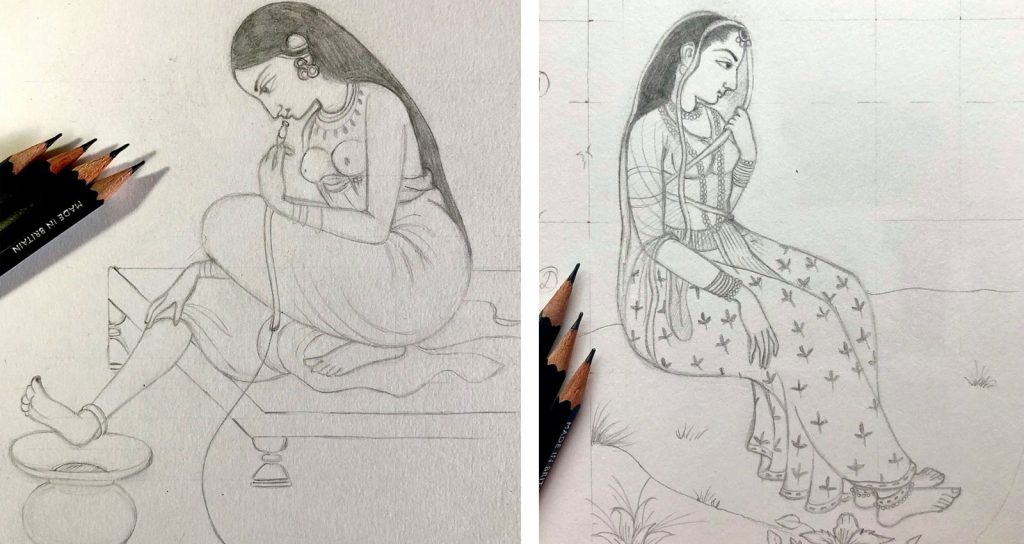
My drawing studies show a flat, 2-dimensional style used in Indian traditional drawing
It’s interesting that women are idealised, with larger eyes & accentuated curves, while men are closer to more realistic models, with smaller eyes & less arched eyebrows. In drawings of Krishna however, the eyes are large.
Traditionally, hands and feet are drawn in a flattish and fine style and reveal a story in their gestures and position. I studied traditional drawings very carefully to try to capture here the depth and clarity of meaning that hands and feet show in this art.
Delicate & fine hand gestures
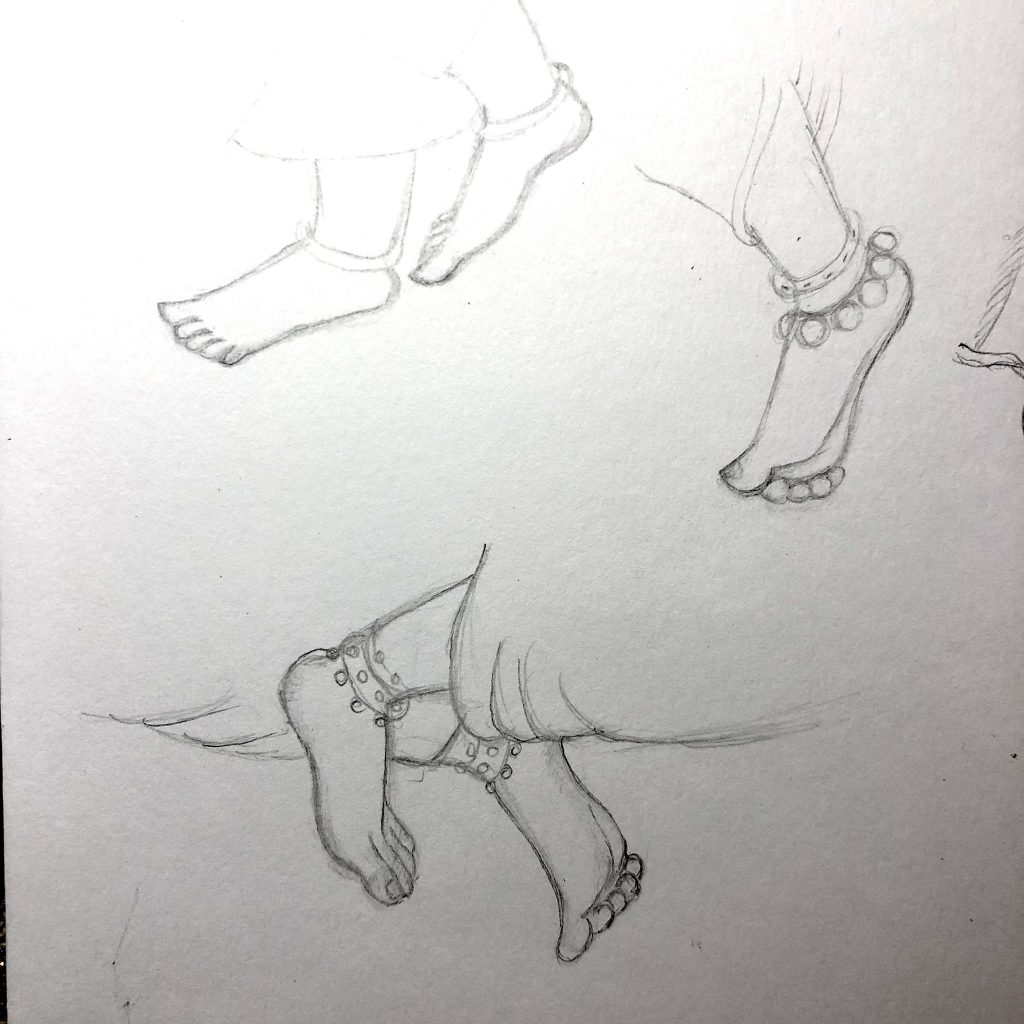
Feet position studies
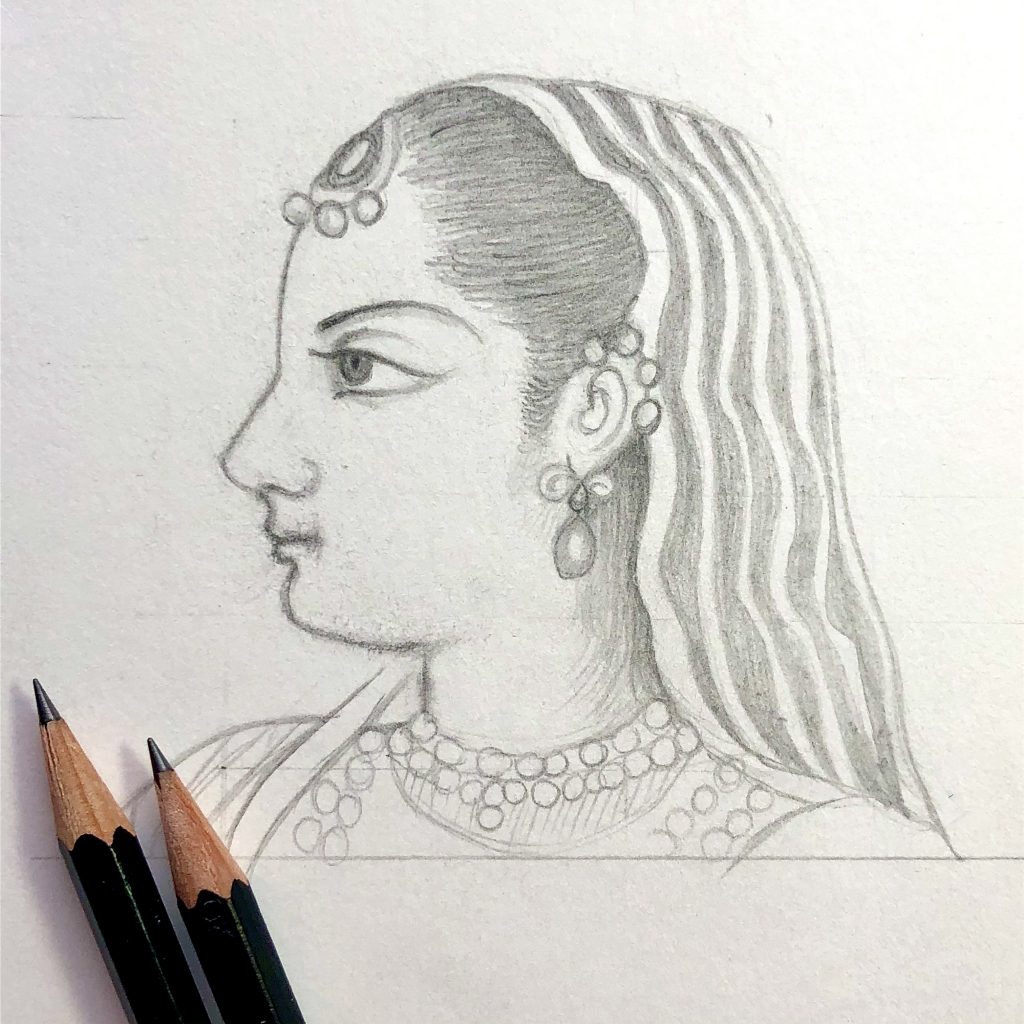 My drawing study of a lady in the Guler style
My drawing study of a lady in the Guler style
Gaining confidence in drawing flowing lines and achieving a ‘tender’ look is quite a challenge but it’s important to practice it. Above, my drawing is a study of a Guler style portrait. The features are gentle, with a triangular shaped eye and an arched eyebrow. On the course, I concentrated on Pahari art styles. ‘Pahari’ means hill country and is centred on a school of painting from the Punjab Hills region. The Guler style developed within the Pahari school and it has a refined and graceful quality. The portraits shown below are studies I drew on the course of some other styles of drawing within the Pahari school between the 15th to 18th centuries.
Other distinct Pahari drawing styles: Basohli, Mughal & Kangra
I have created the drawings shown below to combine many aspects of traditional Pahari drawing that I have studied and practiced. I have added my own touches to each to form a small composition. Each have a narrative of love and tenderness, deep thoughts and beauty which, I hope, is revealed to the viewer through the hand gestures, the eyes and the stance or position of the figures.
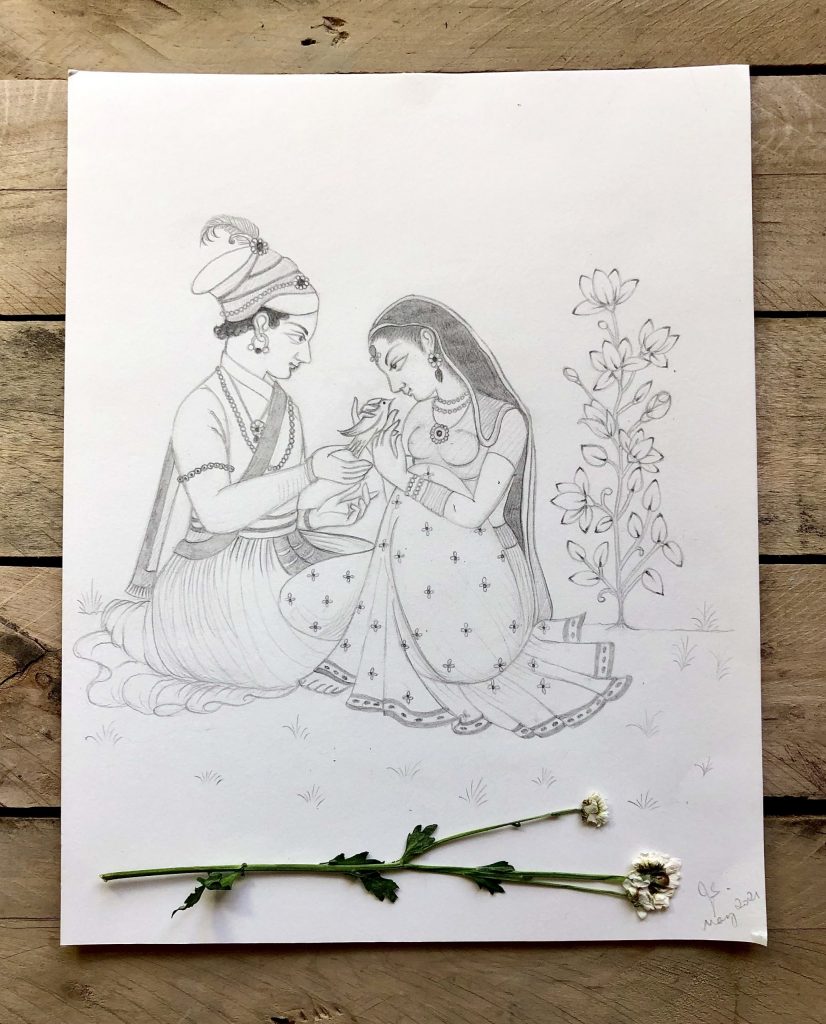
The Bird.
A couple tenderly touch a bird but their eyes shyly focus upon each other.
Ladies & Flowers.
A girl delicately holds a beautiful flower up for her friend to admire.
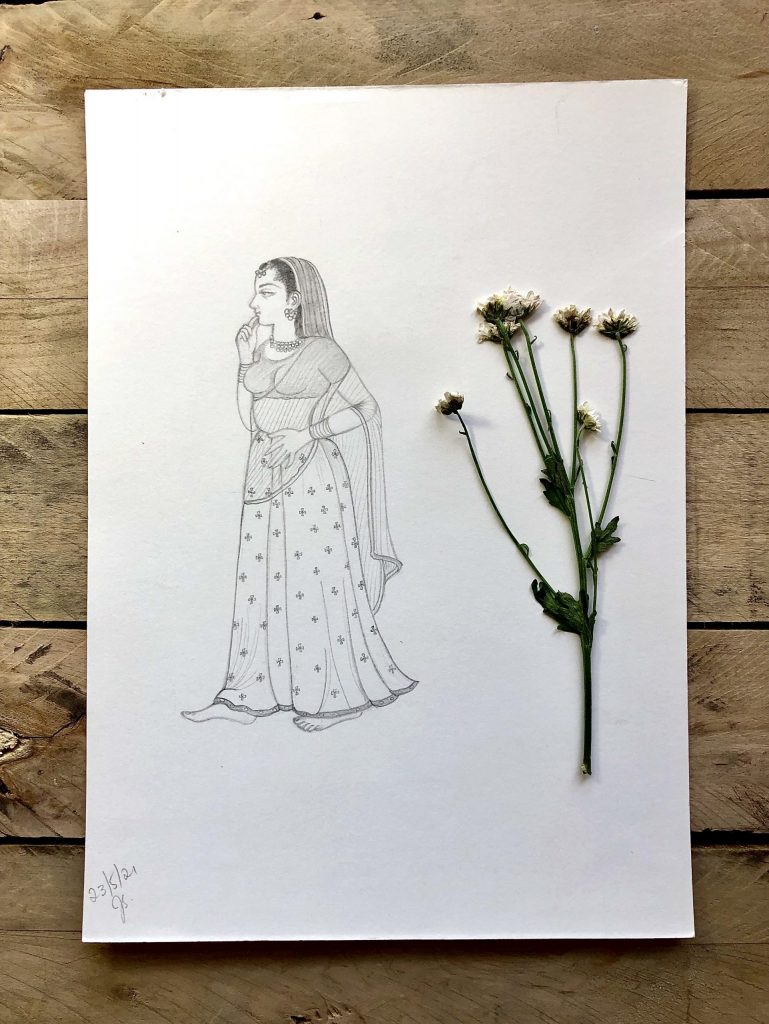
A Maiden.
What is she planning?
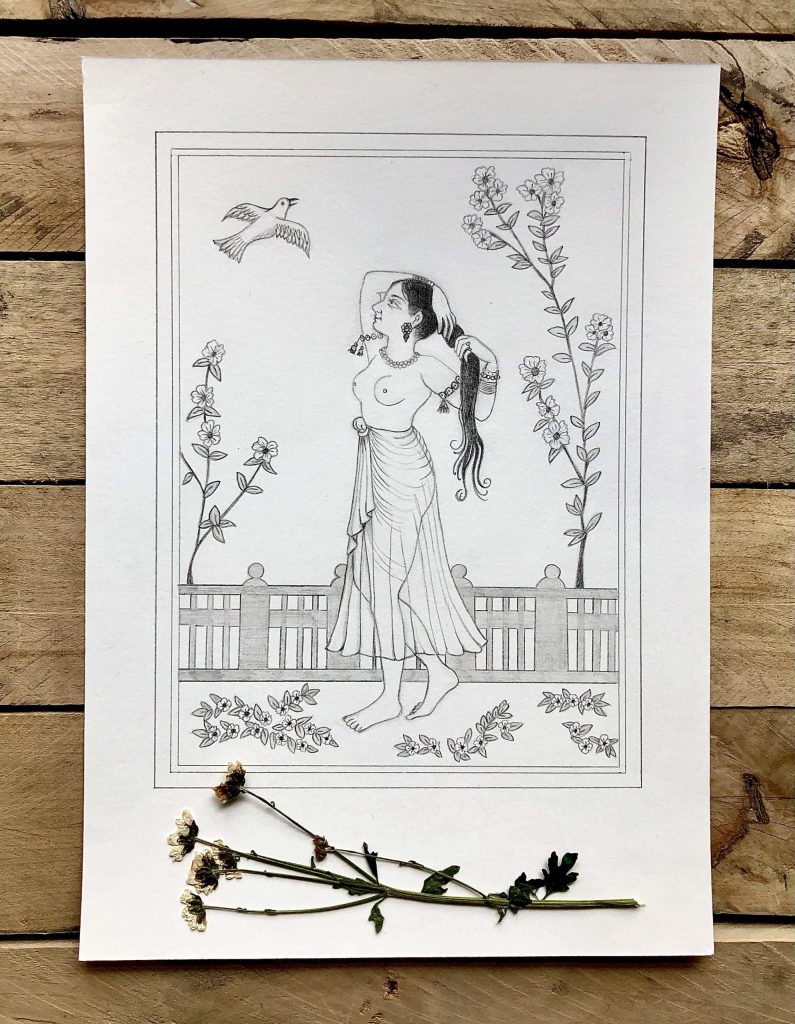
Maiden and Bird.
A story of the beauty of nature.
After learning about Indian miniature art drawing, and its methods, style and gentle ‘language’, I have really benefited from practising this traditional art in many ways:
-
I have developed sharper observation skills which is important when creating my own art.
-
Exploring new equipment has brought wider opportunities for creating. I am now keen to start practising traditional Indian miniature drawing using fine brushes, such as the traditional squirrel-tail brushes used in this ancient art.
-
I now fully appreciate the very gentle beauty of Indian miniature drawing as an art in itself.
©️Jacqueline Synnott 2021
Recent Posts


